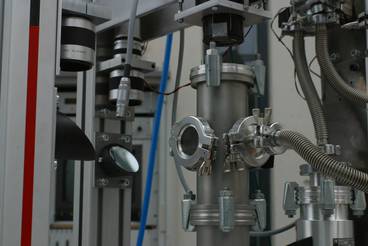optical and radiative properties of ensembles of large ice crystals (PRICE)

research area: astrophysics
experiment title:
Interactions in Cosmic and Atmospheric Particle Systems (ICAPS) - Optical and Radiative Properties of Ensembles of Large Ice Crystals
experiment acronym: PRICE
funding agency: ESA
grant number: AO-2004-091
performing organization:
Institut für Planetologie, Universität Münster
prime investigator:
Prof. Dr. Gerhard Wurm
experiment objective
abstract
During the last century, the presence of icy particles throughout the universe has been confirmed by numerous ground and space based observations. Ultrathin icy layers are known to cover dust particles within the cold regions of the interstellar medium, and drive a rich chemistry in energetic star-forming regions. The polar caps of terrestrial planets, as well as most of the outer-solar-system satellites, are covered with an icy surface. Smaller solar system bodies, such as comets and Kuiper Belt Objects (KBOs), contain a significant fraction of icy materials. Icy particles are also present in planetary atmospheres and play an important role in determining the climate and the environmental conditions on our host planet, Earth. Water ice seems universal in space and is by far the most abundant condensed-phase species in our universe. Many research groups have focused their efforts on understanding the physical and chemical nature of water ice. However, open questions remain as to whether ices produced in Earth’s laboratories are indeed good analogs for ices observed in space environments. Although temperature and pressure conditions can be very well controlled in the laboratory, it is very difficult to simulate the time-scales and gravity conditions of space environments. The bulk structure of ice, and the catalytic properties of the surface, could be rather different when formed in zero gravity in space.
experiment campagins
experiment year: 2007
number of drops: 12


 "
"